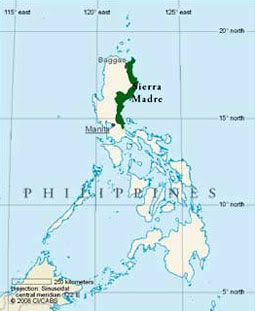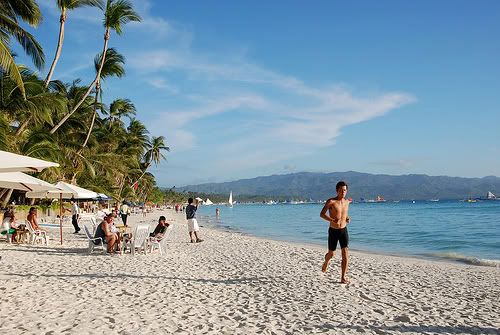The Philippines is Beautiful
I. Introduction
Through the many years of history, the Philippines has become one of the well-known countries around the world. With its historic landmarks and natural resources, you would be saying the Philippines is Beautiful! But why is it beautiful?
Through the many years of history, the Philippines has become one of the well-known countries around the world. With its historic landmarks and natural resources, you would be saying the Philippines is Beautiful! But why is it beautiful?
A. Pearl of the Orient
During the Spanish colonial period Graciano Lopez Jaena, a Filipino propagandist, praised the Philippines by calling it "Pearl of the Orient". He called it so because he admired the beauty of the country as a whole. Long before the colonial period, the Philippines and other Asian countries were known collectively as countries of the "Orient" or what we know now as Asia. Many European countries had desires to venture to the Orient because of the stories of how the natural resources and goods obtained in these countries were exceptional. To say Philippines is the "Pearl" of the Orient shows that the Philippines stands out among the rest.
During the Spanish colonial period Graciano Lopez Jaena, a Filipino propagandist, praised the Philippines by calling it "Pearl of the Orient". He called it so because he admired the beauty of the country as a whole. Long before the colonial period, the Philippines and other Asian countries were known collectively as countries of the "Orient" or what we know now as Asia. Many European countries had desires to venture to the Orient because of the stories of how the natural resources and goods obtained in these countries were exceptional. To say Philippines is the "Pearl" of the Orient shows that the Philippines stands out among the rest.
B. Sea Region
The Philippines has sea regions, all contained in the Philippine Sea, which is a marginal sea north and east of the Philippines. It has a complex and undersea relief, which means that some floors of the sea have risen due to geographical faults. Due some of this, islands are formed.
The Philippine hosts an exotic marine ecosystem, About five hundred species of hard and soft corals occur in the coastal waters and 20 per cent of the worldwide known shellfish species are found in Philippine waters. Sea turtles, sharks, moray eels, octopuses and sea snakes along with numerous species of fish such as tuna can commonly be observed. Additionally, the Philippine Sea serves as spawning ground for Japanese eel, tuna and different whale species.
II. Because of its geographical features
A. Land Features
1. Sierra Madre
The Philippines has mountainous regions. But let's stick with one mountain that might be our own little Great Wall of China: Sierra Madre. Sierra Madre is known to have the longest continuous mountain range in the country. It starts from the town of Baler in the eastern part of the Quezon Province, and crosses the provinces of Cagayan, Isabela and Quezon. Can't picture that? Here's a map to show you:
1. Sierra Madre
The Philippines has mountainous regions. But let's stick with one mountain that might be our own little Great Wall of China: Sierra Madre. Sierra Madre is known to have the longest continuous mountain range in the country. It starts from the town of Baler in the eastern part of the Quezon Province, and crosses the provinces of Cagayan, Isabela and Quezon. Can't picture that? Here's a map to show you:

Now that is our own Great Wall of China. Maybe we can build a wall too?
B. Bodies of Water
1. Boracay
Ah, yes, Boracay. It's the Philippines' celebrities' favorite beach spot. Boracay is, undeniably, one of the most beautiful beaches in the Philippines. Many natives and foreigners come and go to relax and unwind in the alluring sands of joy.
B. Bodies of Water
1. Boracay
Ah, yes, Boracay. It's the Philippines' celebrities' favorite beach spot. Boracay is, undeniably, one of the most beautiful beaches in the Philippines. Many natives and foreigners come and go to relax and unwind in the alluring sands of joy.

Who wouldn't want to lie down in these spots all day?

Besides the beautiful beaches, Boracay has two seasonal patterns, known locally as the Amihan and Habagat seasons. In the Tagalog language, Amihan means a cool northeast wind, and Habagat means west or southwest wind; south-west monsoon. The Amihan season is characterized by moderate temperatures, little or no rainfall, and a prevailing wind from the east. The Habagat season is characterized by hot and humid weather, frequent heavy rainfall, and a prevailing wind from the west. The indicator of seasonal changes is the direction of wind. The changes can sometimes be abrupt and sometimes be detected. The changes vary and may not be the same from the previous years.
III. Because of its people
A. "Average beautiful"
Why are the people of the Philippines averagely beautiful? Because you have to look at the physical genes of the average Filipino. Long before the colonial settlements, the Filipinos were not tall, handsome and beautiful. The Filipinos' physical features were average. They had average noses, not big or not small. They had brown skin color, which unlike today have a much lighter color. They had an average height of 4 feet to 5 feet. But when colonial settlements happened in the country, the Filipino experienced changes in their physical structures. This was more felt in the American period, when the Americans altered the Filipino diet. With more nutrients in their bodies, the Filipinos had changed their physical looks. But they still retained an average look until now, but it's averagely beautiful.
B. Hospitable People
1. Tourists
Filipinos are known to be hospitable people. They always welcome people, whether they are strangers or friends, in their homes. This is felt by tourists the most who come to the Philippines. The Filipinos do their best to let the tourists feel happy, contented and comfortable. Filipino hospitality is unequaled and known the world over.
IV. Because of its culture
A. Tradition
1. Melting pot of mixed inheritance
The Philippine has a diverse culture and a melting pot of mixed inheritance. This goes way back in the pre-colonial period, when the first Filipinos had the early forms of society and social customs. They had their own alphabets and ways of communication. It gradually evolved when other countries outside the Philippines traded with the country. The Muslims, the Chinese and other countries had influenced the culture and everything else, such as our alphabet and our customs. When the Spaniards colonized the country, the Philippines gained even more influence in their culture and from there on, the Philippines continued to have mixed inheritance of different cultures.
B. Rituals
1. Fiestas
Fiestas in the Philippines are held to celebrate a patron saint (the Philippines is the only majority-Christian country in Southeast Asia) or to mark the passage of the seasons, depending on which part of the country you're in. The origin of fiestas go way back in the 1500's, before the Spaniards colonized the Philippines. In the old culture, fiestas were a way of pleasing their gods. So they made offerings to gods for luck and prosperity. They were many varieties of fiestas, such as tribes dancing and tribes whipping themselves repeatedly until they bled. They had different meanings according to what tribe they were in. These had gradually evolved into the fiestas we know today.
V. Conclusion
A. Summary
The Philippines is a very dynamic and complex country because of the land features, the sea regions, the people, the culture, and the history revolving around it. Like any other country, there is a world to explore in the Philippines. Whether you're frolicking in the sands of Boracay, trekking the Sierra Madre or enjoying that yummy puto you got from your Filipino host, we can conclude and say with a smile of enlightenment the Philippines is beautiful.

Check my blogspot. I wrote a similar entry last year about the Philippines.
ReplyDelete